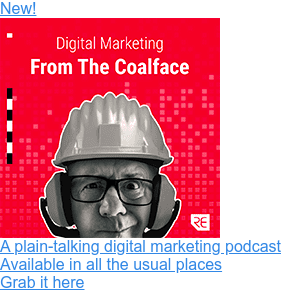One of the main criticisms that we hear about Google Ads or pay per click advertising is that it was expensive and didn't generate any business. People say for example, "yeah we tried it, and it just didn't work it's not right for us".

It may be the case that Google Ads wasn't a good fit for their businesses, but it's more likely that it didn't work because of poor execution.
To make sure you avoid expensive mistakes using Google Ads, we've created this simple plain English guide.
First, Some Background Information

Before we get into the steps for making sure that Google Ads works for your business, we'll start with a little bit of background information.
The concept of Google Ads is simple. When people search in Google, the results page is a blend of natural organic search rankings and adverts. Over the years, Google has introduced and continues to add variations on this theme, such as local business listings. Still, in essence, the majority of the search results page is a mixture of organic and paid results.
In an ideal world, your organisation's webpages will appear in the natural organic listings. This means if people see them and click them, there is no cost, other than for the work that went into securing the rankings in the first place.
That work typically involves developing an understanding of the problems your ideal customers are trying to solve. You then create a list of the keywords and phrases they type into search engines when looking for solutions. From there, you develop a strategic approach to creating and promoting content until you secure high rankings.
Search Engine Optimisation or SEO

This sort of activity is called search engine optimisation or SEO. It's a subject many people find confusing and frustrating. If you're not sure what search engine optimisation is we've created a couple of handy plain English guides called what is SEO and SEO explained.
The problem with search engine optimisation is it takes time. If your business operates in a competitive market, then it's likely to take 6 to 9 months of concerted effort before you start to get any traction from organic search. There are exceptions to this general rule; however, it's scarce for search engine optimisation to deliver quick results.
This is where Google Ads or pay per click advertising can help.
PPC Makes Web Based Lead Generation Fast

Using PPC advertising, it's possible to quickly put your organisation in front of people who want to buy what you're selling. However, as I alluded to above many organisations jump in and try PPC advertising without giving it the care and attention it requires.
The bottom line is that it's straightforward to set up a PPC campaign. However, it's also easy, using PPC, to waste a significant amount of money.
Ideally, you should pay somebody to set up and manage your PPC campaign. However, if budgets are tight, following the simple advice below will help you avoid wasting money.
Keep It Simple

This guide takes a very simple approach to create a very simple starter for 10 Google Ads campaign. If you're inexperienced with Google Ads, I would strongly advise you to follow this guide to the letter and avoid the trap of making your PPC campaign complex.
To keep things simple and practical, this guide will cover one geographic area and one product or service line offered by your organisation.
As you become more proficient with Google Ads, you may want to experiment and use one campaign targeting different products and services by using Ad Groups. For now, I'm going to keep things very simple, and by doing this, you will, hopefully, see a return on your investment.
To get started I'll discuss keywords. For PPC campaigns these are split into two groups, keywords you like and keywords you don't like.
Keywords You Like

At the heart of Google's PPC platform are keywords. It's your job to establish which keywords you want to bid on or in other words which keywords when typed into a Google search page should trigger your adverts. For example, if your company sells classic car insurance, you might want your advert to appear when somebody types "insure my classic car" into Google.
Using a keyword research tool such as SEM Rush will help you find the keywords on which to bid. These tools will also provide an estimate of what you will pay for each click of your advert. Broadly speaking the cost of clicks is related to the commercial value of the business they have the potential to generate. For example, if you're selling a low-value product costing only a few pounds, it wouldn't make any sense if clicks cost about the same. However, if the product or service you are selling is likely to generate many thousands of pounds, don't be surprised if each click costs £10, £20, £30 or even £50.
There are, of course, many other factors affecting the price of clicks. These include competition, the quality of your adverts and the relevance of the page people arrive at, often referred to as the landing page, when they click your ad. I'm not going to attempt to cover these subjects in this post.
Keywords You Don't Like

As well as creating a list of the keywords that you want to bid on, the words that will trigger your adverts, you should also spend time building a list of negative keywords. Negative keywords are very often overlooked when setting up a PPC advertising campaign. This is a huge mistake.
The best way to describe negative keywords is by using an example so here goes. Let's say you decide you want an advert to appear in Google search results when somebody types the phrase "web design company". So far, so good. However, let's assume that your web design company only operates at the higher end of the market; in other words, you don't build cheap websites. By adding the word "cheap" to your list of negative keywords, your advert will appear if somebody types "web design company", but it won't appear if they type "cheap web design company".
Negative keywords are a great way of making sure your advert only gets seen by the right people, this, in turn, helps to reduce the number of clicks you pay for from people who will never buy what you are selling.
Whatever you do, when you create a Google Ads campaign, do not forget negative keywords.
Click Budget

At this stage, you will know which keywords you want to bid on and which keywords should make sure your advert isn't shown. You will also understand the likely cost of every click, and from there, you will be able to work out the budget required to run your campaign. Let me explain.
Let's say the average cost of a click for the keywords that you have chosen is £5. One hundred clicks from your advert will cost £500. An average conversion rate for B2B services is about 3%. That means you'll make three sales from your 100 clicks which gives you a cost per sale of £500/3 = £167.00. You need to establish if this is profitable if it isn't, it's back to the drawing board. This calculator will help.
All of this assumes there is a good enough volume of searches for your keywords to generate 100 clicks. In simple terms are the keywords that you're going to bid on used by your ideal customers enough times per month for you to hit your target.
Remember your advert will not get clicked every time it's shown on a search results page, in fact in a B2B situation your advert will get clicked about 2.4% of the number of times it's shown. This means, using our example above, your advert will need to be seen 4000 times to get 100 clicks and three new pieces of business. This means you need to establish whether the keywords you have chosen have the potential to trigger your advert this many times. If they are not going to, then you have to revisit your keyword research.
A Recap

So let's recap. At this stage, we have a list of the keywords we want to bid on and a list of the keywords we want to use, so our advert isn't shown to the wrong people. We've established that the keywords we've chosen are used sufficiently so that our advert gets the right amount of exposure. We also found that all things being equal, the cost per acquisition of a new customer makes commercial sense. If all these boxes are ticked, then it's time to move on to the next stage, creating our landing page.
PPC Landing Page

By far, the biggest mistake most people make when starting a PPC campaign is not building a landing page. A landing page is a dedicated webpage designed for the people who click your advert. What many people do instead of creating a landing page is simply send the click traffic to their website's homepage. This is a big mistake.
At the very least, the click traffic should get sent to a specific page on your website that's perfectly aligned with the search carried out by the person using Google. For example, if your organisation offers three distinct services, and you're running a PPC campaign for only one of those services, the click traffic should get sent to the most relevant page.
But even this approach isn't ideal.
There is plenty of compelling research that suggests dedicated landing pages are the best way of converting clicks from PPC campaigns. These pages are quite distinctive and quite different from standard webpages. For example, most of the clutter that appears on a standard webpage, such as the menu, is removed. This is done to focus the mind of the person visiting the page. It's done to persuade them to do what you want them to do, for example, fill out the form or call a specific phone number.
Your landing page should be short and sharp, and it should be crystal clear what you want the visitor to do. For example, here's a landing page we created to encourage people to sign up to receive information about the webinars that we run. We didn't send paid search traffic from a PPC campaign to this landing page, but it serves the same purpose.
It's quite common to use a different platform from your website for the creation of landing pages. The example above, for the webinar signup, was built using Hubspot. Another excellent tool for creating dedicated landing pages is Unbounce.
Whatever you use to build your landing pages, make sure you follow these three steps.
- Make sure they are targeted and not generic. When people click your advert, the imagery and messaging should match the person's expectations. If you get this wrong, they will most likely hit the back button, and your click budget will get wasted. Everything from the photographs you use to the headline should make your visitor believe your offer matches their needs.
- Establish your credibility with some social proof such as testimonials or reviews. You could also include a Live Chat function to show you're a real credible business eager to solve their problem.
- Keep it simple. Everything from your messaging to the number of fields in your webform should be simple. If you force people to work hard, for example insisting they give you their name, address, job title, email address, phone number and so on they are less likely to fill in your form.
Also, be prepared to experiment with your landing page by adjusting the text, images and form fields until you find the combination that works best. Again some of the landing page creation platforms mentioned above make doing this easy.
Armed with our keywords, negative keywords and targeted landing pages we're finally ready to set up our campaign in the Google Ads platform.
Google Ads Platform Essentials

There are lots of settings inside the Google ads platform, and it's easy to get confused and lost. However, the essential components are these:
- Campaign name. Just what it says on the tin, it's the name you want to give to your campaign—for example, Web Design Services in Scotland.
- Campaign type. Campaigns can use preset goals such as Sales, Leads, Website traffic, Product & brand consideration and Brand Awareness. For most B2B campaigns you're probably going to select Leads.
- Networks. You can choose to show your adverts in a variety of places. For this article, I'm going to suggest you select the search network. This simply means your adverts will be shown on Google search results pages.
- Locations & languages. This setting, for example, lets you decide where geographically your advert will be shown. For example, you might choose only to show your adverts to people who are using Google from a location somewhere in Scotland.
- Bidding and budget. Having done your keyword research, you will have a pretty good idea of what each click is going to cost. You will also have decided how many clicks you are going to need to generate some business. Therefore it's easy to work out how much your budget needs to be. With your first campaign, I would suggest you let Google automatically set your bids.
- Ad extensions. Over the last few years, Google has introduced several ad extensions. These are additional pieces of information that can be added to your advert to increase the likelihood of it getting clicked.
- Additional settings. There are several more settings that you may want to use. These include setting your campaign start and end date and setting your ad schedule only to show your advert at certain times of the day. For example, if you decide to put live chat on your landing page, you may only want your advert to show during office hours, so somebody is available to answer any questions that people ask.
It's easy to get confused while setting up a Google ads campaign. However, if you systematically work through each of the settings listed above, you will quickly realise there is nothing particularly complicated about them.
Your Ads

Creating effective Google ads is a combination of art and science, and the platform provides lots of functionality for creating dynamic adverts. When starting, creating a responsive advert is almost certainly going to be the most effective approach. Google provides information about responsive ads here.
Further to the above, I found this article created by landing page specialists Unbounce to be very useful. It describes the best practice for creating effective adverts and offers advice on landing page text.
Your overall aim when using Google ads is to choose the right keywords to bid on, align the ad copy with those keywords and continue the theme through to the landing page. Doing this will make sure your keywords achieve a good quality score. The better your quality score, the more likely your advert will appear at the top, but the quality score also affects the cost you pay for clicks.
Don't Set And Forget

Once you've created all the required components for your Google ad campaign and your campaign is up and running, it's essential that you monitor it closely. For example, once your advert is live and receiving impressions, that is to say, irrespective of whether or not it gets clicked it's getting shown in Google search results, you will start to see data inside the Google Ads platform.
One of the most critical pieces of data that you see is a list of the actual search terms people are typing into Google. Importantly this list of keywords will provide valuable information about additional negative keywords that you should add to your campaign. By monitoring this list of keywords and adding negative keywords to your campaign, you will minimise the number of clicks that you receive from people who are not looking for what you're offering.
And Finally

If you've read this article in its entirety, you will have a thorough understanding of how Google Ads work. Google Ads is a powerful platform and can, when used correctly generate valuable leads for your business. Equally, a few simple mistakes will result in your budget getting blown without any business getting generated. If Google ads work well for your business, and the return on investment is solid, you can consider not using search engine optimisation as a lead gen technique. However, most companies use Google Ads in parallel with an SEO strategy.
If you're still not sure if Google ads are right for you and your business, or if you'd like some advice, feel free to contact us for an informal no-obligation chat.

